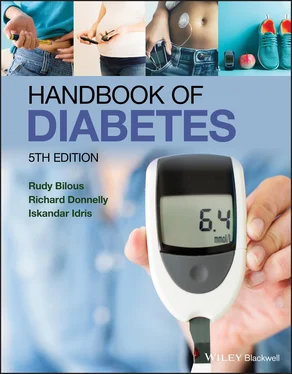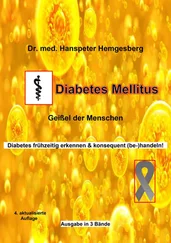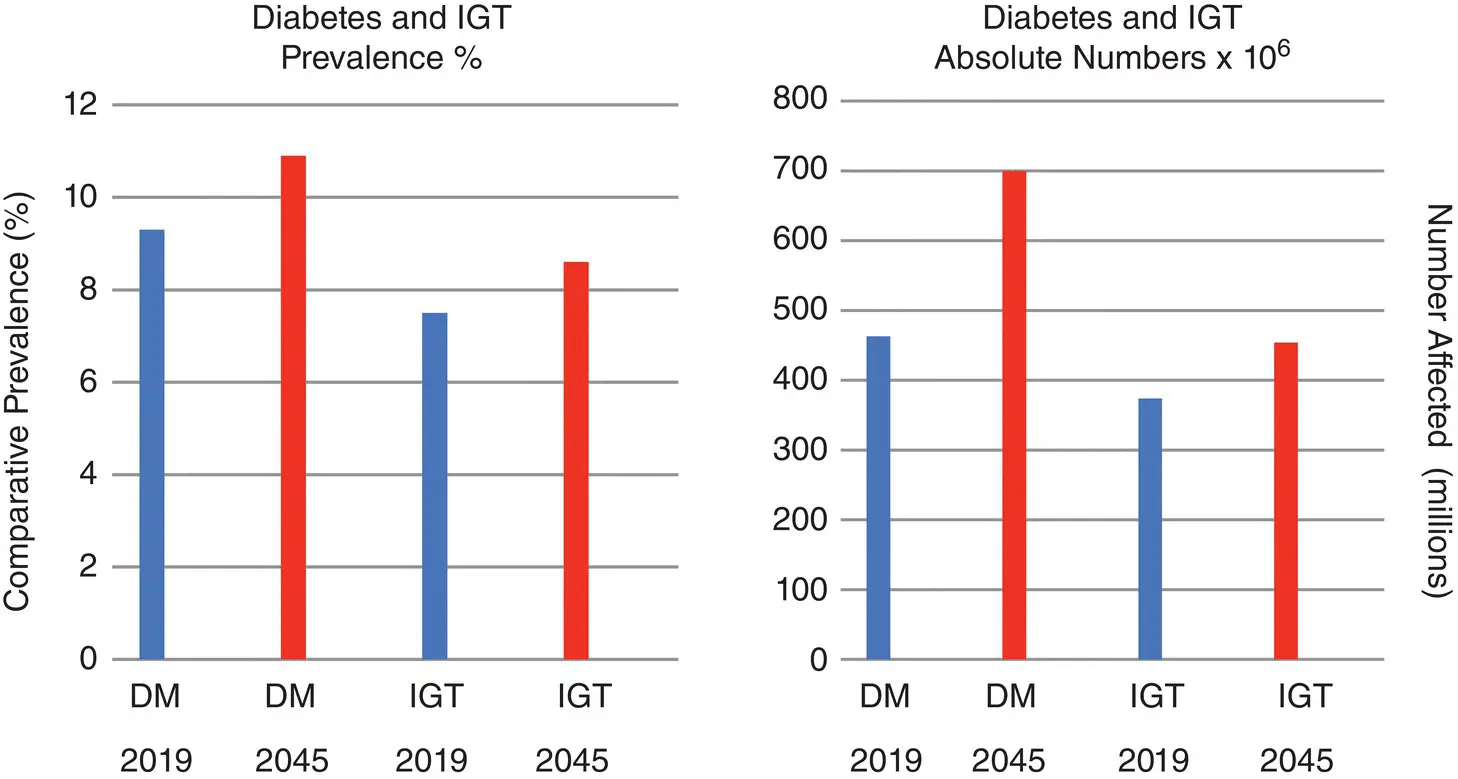
Figure 1.1 Estimated comparative raw prevalence of diabetes and impaired glucose tolerance (IGT) together with numbers affected for the global population age 20–79 years for 2019 (BLUE) and 2045 (RED). Data from Diabetes Atlas , 9th edn, International Diabetes Federation.

Figure 1.2 Rates of major complications of diabetes for the US population derived from NHANES or Medicare data. aNHANES data 1988–2000; bMedicare population Minnesota 1993–5; cNHANES data, 1999–2006 (chronic kidney disease defined as estimated GFR <60 mL/min/1.73 m 2.); dNHANES data, 1999–2002.
This handbook sets out to cover the essentials of diagnosis, epidemiology and management of diabetes and its’ distressingly many complications. By using case vignettes and summaries of key trials together with web links and suggestions for further reading, it will hopefully serve as a useful desktop reference for all healthcare professionals who provide diabetes care.
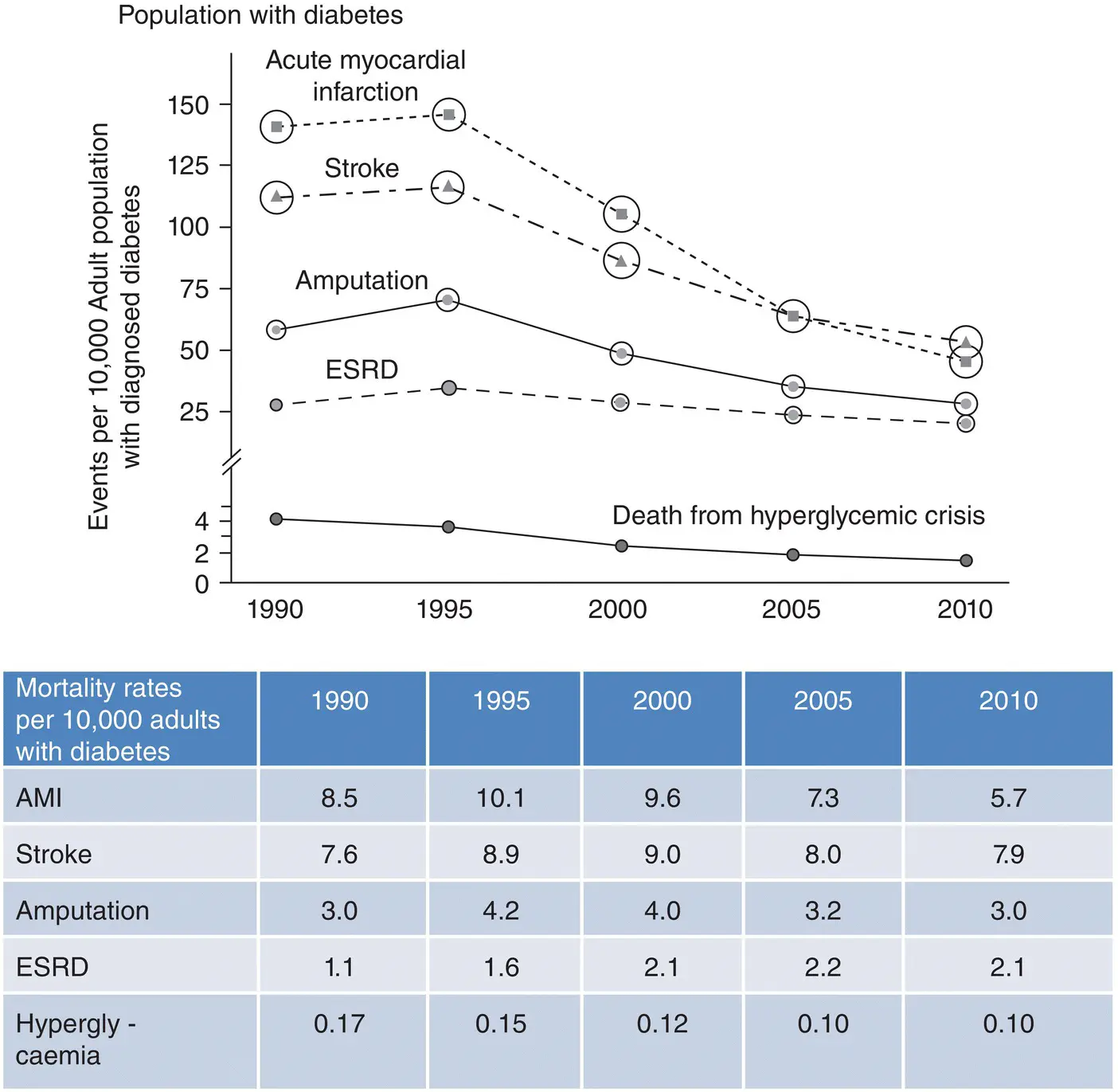
Figure 1.3 Age standardised mortality rates from diabetes‐related complications in the US population with known diabetes 1990–2010. Circle size is proportional to the absolute number of cases. The table shows the rate per 10,000 population with or without diabetes. AMI = acute myocardial infarction, ESRD = End Stage Renal Disease. Figure and data from Gregg, E.W. et al. NEJM 2014; 370:1514–23 with permission
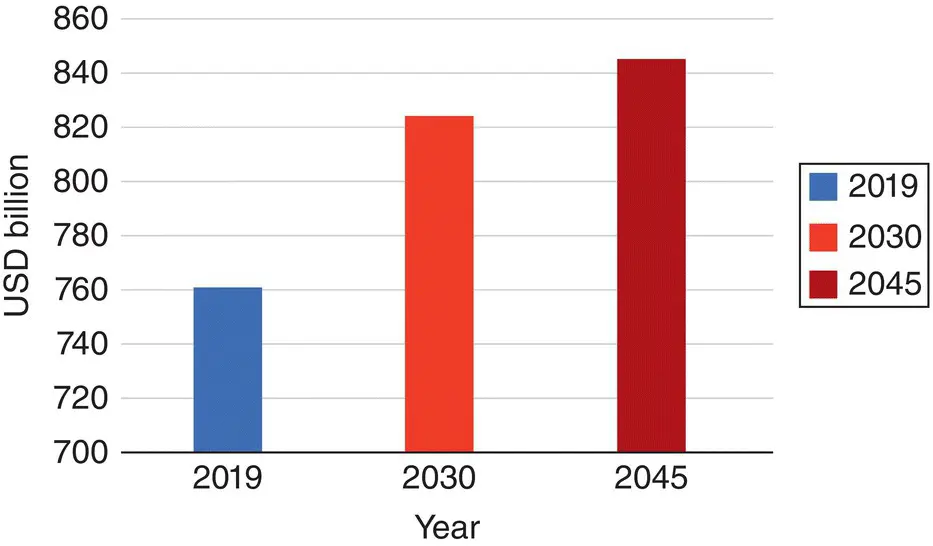
Figure 1.4 Estimated global diabetes-related healthcare costs for adults aged 20–79 years in 2019, 2030 and 2045.
Source: IDF Diabetes Atlas 9th Edition 2019.
1 International Diabetes Federation. Diabetes Atlas, 9th edn. Brussels: International Diabetes Federation, 2019.
Diabetes Atlas: www.diabetesatlas.org
Chapter 2 History of diabetes
KEY POINTS
Diabetes has been known since ancient times.
A link to the pancreas was established in 1889 culminating in the isolation of insulin in 1921.
There have been five Nobel Prizes awarded to scientists researching diabetes and carbohydrate metabolism.
The structure of insulin was finally elucidated in the 1960s.
Insulin was the first therapy to be manufactured using genetic engineering techniques.
There are now several biologically engineered designer insulin molecules approved for use in man.
The range of oral and other therapies for type 2 diabetes has led to the concept of personalised medicine.
Diseases with the clinical features of diabetes have been recognised since antiquity. The Ebers papyrus ( Figure 2.1), dating from 1550 BC, describes a polyuric state that resembles diabetes.
The word ‘diabetes’ was first used by Aretaeus of Cappadocia in the second century CE. Aretaeus gave a clinical description of the disease ( Box 2.1), noting the increased urine flow, thirst, and weight loss, features that are instantly recognisable today.
The sweet, honey‐like taste of urine in polyuric states, which attracted ants and other insects, was reported by Hindu physicians such as Sushrut (Susruta) during the fifth and sixth centuries CE. These descriptions even mention two forms of diabetes, the more common occurring in older, overweight, and indolent people, and the other in lean people who did not survive for long. This empirical subdivision predicted the modern classification into type 1 and type 2 diabetes.
Diabetes was largely neglected in Europe until a seventeenth‐century English physician, Thomas Willis (1621–75) ( Figure 2.2), rediscovered the sweetness of diabetic urine. Willis, who was physician to King Charles II, thought that the disease had been rare in ancient times, but that its frequency was increasing in his age ‘given to good fellowship’. Nearly a century later, the Liverpool physician Matthew Dobson (1735–84) showed that the sweetness of urine and serum was caused by sugar. John Rollo (d. 1809) was the first to apply the adjective ‘mellitus’ to the disease.
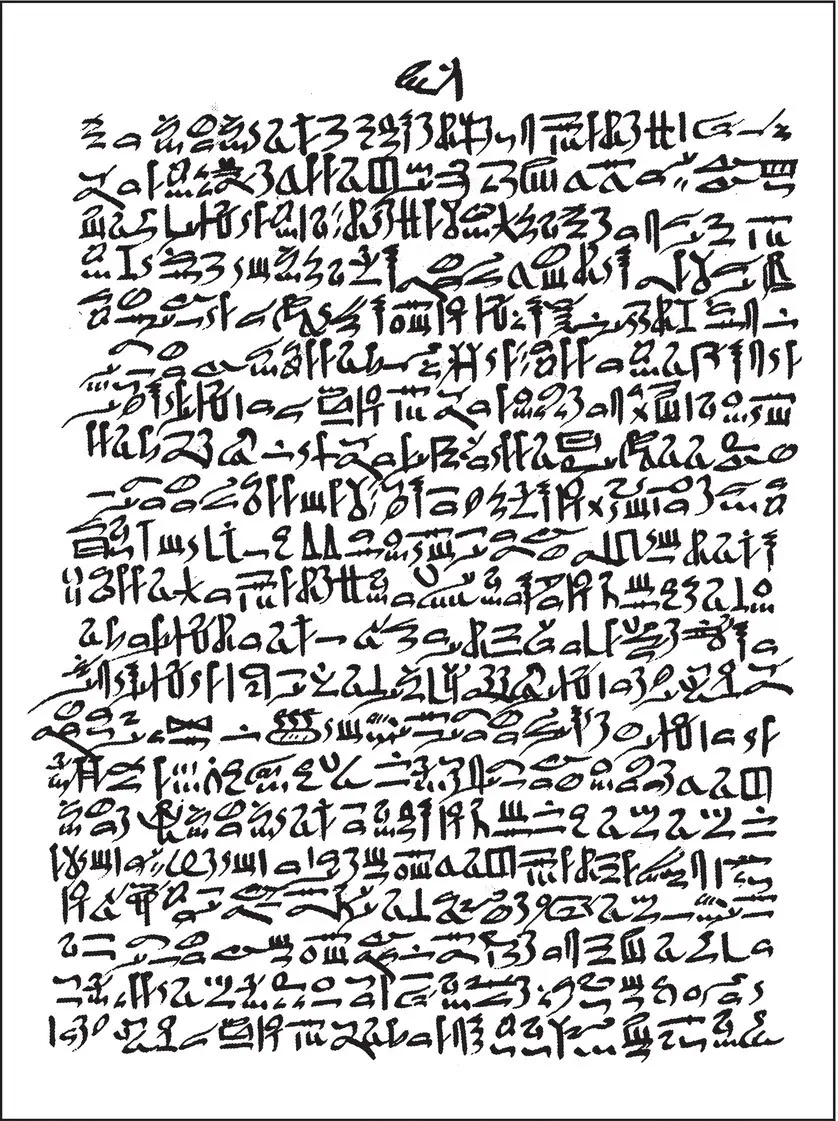
Figure 2.1 The Ebers papyrus. The Wellcome Institute Library, London, UK.
Box 2.1Description of diabetes by Aretaeus.
Diabetes is a dreadful affliction, not very frequent among men, being a melting down of the flesh and limbs into urine. The patients never stop making water and the flow is incessant, like the opening of aqueducts. Life is short, unpleasant and painful, thirst unquenchable, drinking excessive, and disproportionate to the large quantity of urine, for yet more urine is passed. One cannot stop them either from drinking or making water. If for a while they abstain from drinking, their mouths become parched and their bodies dry; the viscera seem scorched up, the patients are affected by nausea, restlessness and a burning thirst, and within a short time, they expire.
Adapted from Papaspyros S. The History of Diabetes Mellitus , 2nd edn. Stuttgart: Thieme, 1964.

Figure 2.2 Thomas Willis. The Wellcome Institute Library, London, UK.
In the 19th century, the French physiologist Claude Bernard (1813–78) ( Figure 2.3) made many discoveries relating to diabetes. Among these was the finding that the sugar that appears in the urine was stored in the liver as glycogen. Bernard also demonstrated links between the central nervous system and diabetes when he observed temporary hyperglycaemia (piqûre diabetes) when the medulla of conscious rabbits was transfixed with a needle.
In 1889, Oskar Minkowski (1858–1931) and Joseph von Mering (1849–1908) from Strasbourg removed the pancreas from a dog to see if the organ was essential for life. The animal displayed typical signs of diabetes, with thirst, polyuria, and wasting, which were associated with glycosuria and hyperglycaemia. This experiment showed that a pancreatic disorder causes diabetes, but they did not follow up on their observation.
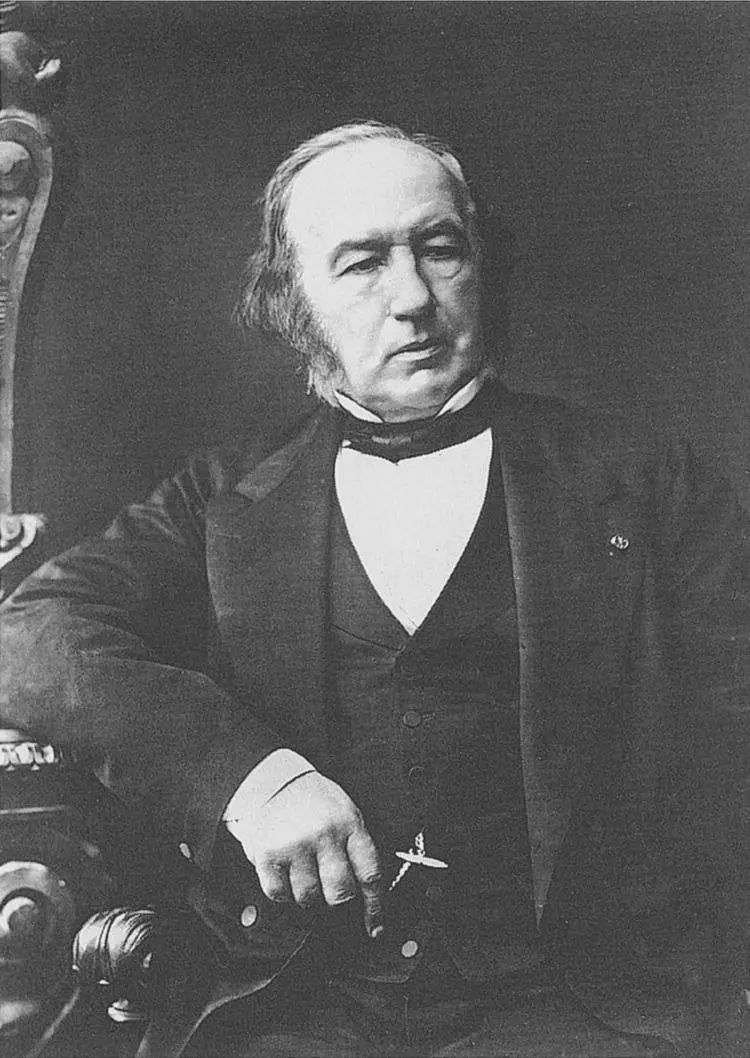
Figure 2.3 Claude Bernard. The Wellcome Institute Library, London, UK.
Paul Langerhans (1847–88) ( Figure 2.4) from Berlin, in his doctoral thesis of 1869, was the first to describe small clusters of cells in teased preparations of the pancreas. He did not speculate on the function of the cells, and it was Edouard Laguesse in France who later (1893) named the cells ‘islets of Langerhans’ and suggested that they were endocrine tissue of the pancreas that produced a glucose‐lowering hormone.
Читать дальше
